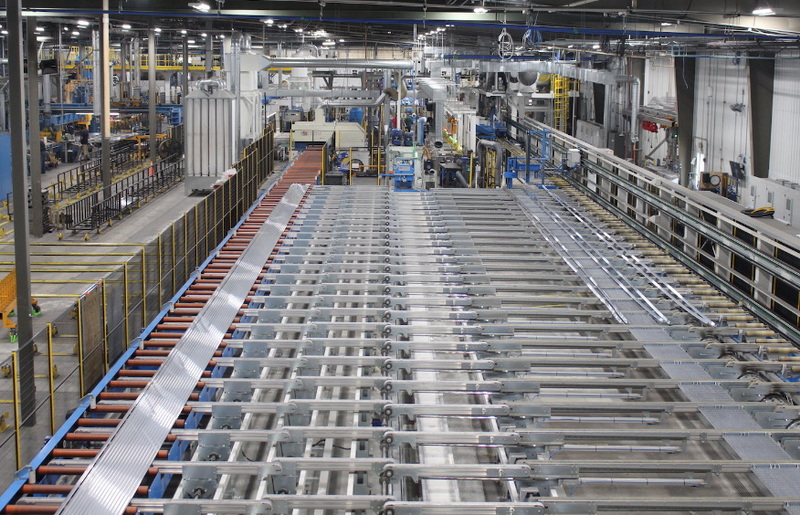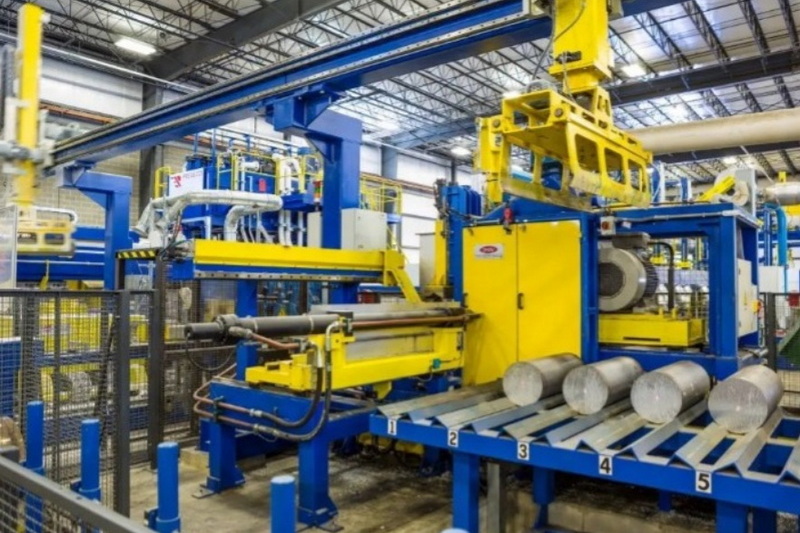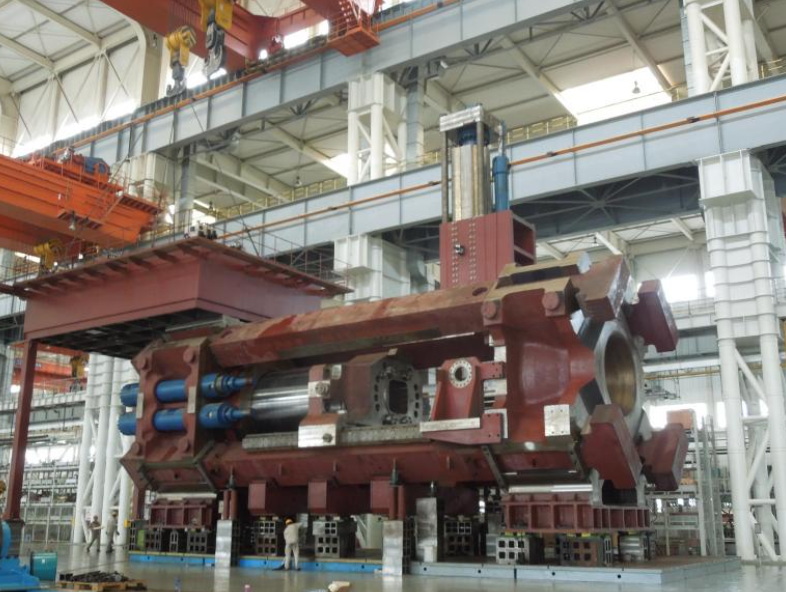Content Menu
● Introduction
● Understanding the Aluminum Extrusion Process
● Key Safety Hazards in Aluminum Extrusion Operations
● Essential Safety Measures
>> Personal Protective Equipment (PPE)
>> Machine Guarding
>> Lockout/Tagout Procedures
>> Training and Competence
● Aluminum Extrusion Press Employee Safety Checklist
● Advanced Safety Technologies
>> Real-Time Monitoring Systems
>> Automation and Robotics
>> Data Analytics for Safety
● Environmental Controls
>> Ventilation and Air Quality
>> Noise Control
● Fire Safety and Emergency Response
>> Fire Prevention
>> Emergency Response Planning
● Ergonomics and Manual Handling
>> Workstation Design
>> Lifting Aids
● Chemical Safety
>> Material Safety Data Sheets (MSDS)
>> Proper Storage
● Regular Maintenance and Inspections
>> Scheduled Maintenance
>> Non-Destructive Testing
● Promoting a Safety Culture
>> Leadership Commitment
>> Employee Involvement
● Continuous Improvement
>> Incident Reporting and Analysis
>> Safety Performance Metrics
● Conclusion
● FAQ
>> 1.What are the most common injuries in aluminum extrusion press operations?
>> 2. How often should safety training be conducted for extrusion press operators?
>> 3. What are the key components of an effective lockout/tagout program for extrusion presses?
>> 4. How can ergonomic risks be minimized in aluminum extrusion press operations?
>> 5. What should be included in an emergency response plan for an aluminum extrusion facility?
● Citations:
Introduction
Aluminum extrusion is a vital manufacturing process used across various industries, from construction to automotive. However, the operation of aluminum extrusion presses involves significant risks that can jeopardize worker safety if not properly managed. This comprehensive guide explores essential safety measures, best practices, and innovative solutions to ensure the well-being of employees in aluminum extrusion press operations.

Understanding the Aluminum Extrusion Process
Before delving into safety measures, it's crucial to understand the basic steps of aluminum extrusion:
1. Preheating the aluminum billet and steel die
2. Loading the billet into the extrusion press container
3. Applying pressure to force the aluminum through the die
4. Controlled cooling of the extruded profile
5. Cutting the profile to desired lengths
6. Further processing and finishing as needed
Key Safety Hazards in Aluminum Extrusion Operations
Aluminum extrusion press operations present several potential hazards:
1. High temperatures
2. Heavy machinery and moving parts
3. Hydraulic system risks
4. Chemical exposure
5. Ergonomic challenges
6. Noise pollution
7. Fire and explosion risks
Essential Safety Measures
Personal Protective Equipment (PPE)
Proper PPE is crucial for protecting workers from various hazards:
- Safety glasses or goggles
- Cut-resistant gloves
- Heat-resistant clothing
- Steel-toed boots
- Hearing protection
Machine Guarding
Ensure all moving parts of the extrusion press are properly guarded to prevent accidental contact[1]. This includes:
- Safety interlocks on access doors
- Emergency stop buttons within easy reach
- Proper guarding around pinch points and moving components
Lockout/Tagout Procedures
Implement strict lockout/tagout procedures for maintenance and repair work:
1. Shut down all energy sources
2. Lock out the energy-isolating devices
3. Tag the lockout devices with appropriate warnings
4. Verify energy isolation before work begins
Training and Competence
Comprehensive training programs are essential for all operators and maintenance personnel[3]. Training should cover:
- Safe operating procedures for the extrusion press
- Emergency response protocols
- Proper handling and storage of materials
- Recognition of potential hazards
Aluminum Extrusion Press Employee Safety Checklist
Implementing a safety checklist is crucial for maintaining a safe work environment. Here's a comprehensive aluminum extrusion press employee safety checklist:
1. Pre-operation inspection:
- Check for any visible damage or wear on the press
- Ensure all guards are in place and functioning
- Verify emergency stop buttons are operational
- Inspect hydraulic systems for leaks
2. Personal Protective Equipment:
- Wear appropriate safety glasses or goggles
- Use cut-resistant gloves when handling materials
- Wear heat-resistant clothing
- Ensure steel-toed boots are worn
- Use hearing protection in high-noise areas
3. Operational safety:
- Follow proper startup procedures
- Maintain clear communication with team members
- Adhere to safe loading and unloading practices
- Monitor press operations for any abnormalities
4. Emergency preparedness:
- Know the location of fire extinguishers and first aid kits
- Be familiar with emergency evacuation routes
- Understand how to activate emergency stop procedures
5. Housekeeping:
- Keep work areas clean and free of debris
- Properly store tools and equipment when not in use
- Clean up spills immediately
6. Maintenance and repair:
- Follow lockout/tagout procedures before any maintenance
- Use only authorized personnel for repairs
- Report any equipment malfunctions immediately
7. Chemical safety:
- Know the location of Safety Data Sheets (SDS)
- Use proper handling techniques for all chemicals
- Ensure adequate ventilation when working with hazardous substances
8. Ergonomics:
- Use proper lifting techniques
- Take regular breaks to avoid repetitive strain injuries
- Adjust workstations to promote good posture
9. Training and awareness:
- Attend all required safety training sessions
- Stay informed about updated safety procedures
- Report any safety concerns to supervisors
10. End of shift:
- Properly shut down equipment
- Clean and organize work area
- Report any issues encountered during the shift

Advanced Safety Technologies
Real-Time Monitoring Systems
Implement advanced monitoring systems that track machine performance and environmental conditions:
- Temperature sensors
- Pressure monitors
- Air quality detectors
These systems can alert operators to potential hazards before they escalate into serious problems[4].
Automation and Robotics
Where feasible, incorporate automation to reduce human exposure to hazardous tasks:
- Automated billet loading systems
- Robotic handling of hot extrusions
- Computer-controlled press operations
Data Analytics for Safety
Utilize data analytics tools to:
- Analyze historical safety incidents
- Identify patterns and trends
- Implement proactive preventative measures
Environmental Controls
Ventilation and Air Quality
Ensure adequate ventilation to dissipate heat and fumes:
- Install high-capacity exhaust systems
- Regularly maintain and clean air filtration units
- Monitor air quality in work areas
Noise Control
Implement noise reduction measures:
- Install sound barriers or acoustic panels
- Provide adequate hearing protection
- Conduct regular noise level assessments
Fire Safety and Emergency Response
Fire Prevention
Implement comprehensive fire safety protocols:
- Install fire extinguishers in accessible locations
- Conduct regular fire drills
- Maintain clear access routes to exits and emergency equipment
Emergency Response Planning
Develop a detailed emergency response plan:
- Procedures for dealing with injuries or accidents
- Contact information for emergency services
- Designated assembly points for evacuations
Ergonomics and Manual Handling
Workstation Design
Evaluate workstation design for ergonomic considerations:
- Adjustable height workbenches
- Anti-fatigue mats for standing areas
- Proper lighting to reduce eye strain
Lifting Aids
Use mechanical lifting aids for heavy materials:
- Forklifts
- Hoists
- Conveyor systems
Chemical Safety
Material Safety Data Sheets (MSDS)
Ensure all employees have access to MSDS for chemicals used in the process:
- Lubricants
- Cleaning agents
- Hydraulic fluids
Proper Storage
Store chemicals according to their compatibility and hazard classification:
- Separate flammable materials
- Use appropriate containment for corrosive substances
- Implement proper labeling systems
Regular Maintenance and Inspections
Scheduled Maintenance
Implement a rigorous maintenance schedule:
- Daily equipment checks
- Weekly inspections of critical components
- Monthly comprehensive system reviews
Non-Destructive Testing
Utilize non-destructive testing methods to identify potential issues:
- Ultrasonic testing for internal defects
- Radiographic inspections for hidden flaws
Promoting a Safety Culture
Leadership Commitment
Demonstrate management's commitment to safety:
- Regular safety walk-throughs by executives
- Open-door policy for safety concerns
- Recognition of safety achievements
Employee Involvement
Encourage active participation in safety initiatives:
- Safety committees with worker representation
- Suggestion programs for safety improvements
- Peer-to-peer safety observations
Continuous Improvement
Incident Reporting and Analysis
Implement a robust incident reporting system:
- Encourage reporting of near-misses
- Conduct thorough investigations of all incidents
- Share lessons learned across the organization
Safety Performance Metrics
Track and analyze safety performance metrics:
- Injury rates
- Safety audit scores
- Training completion rates
Conclusion
Ensuring employee safety in aluminum extrusion press operations requires a comprehensive approach that combines proper equipment, thorough training, and a strong safety culture. By implementing the strategies outlined in this guide and consistently using an aluminum extrusion press employee safety checklist, organizations can significantly reduce risks and create a safer work environment for all employees.
Remember that safety is an ongoing process that requires constant vigilance and adaptation to new challenges. Stay informed about industry best practices, invest in advanced safety technologies, and always prioritize the well-being of your workforce. With these measures in place, aluminum extrusion press operations can be both productive and safe.

FAQ
1.What are the most common injuries in aluminum extrusion press operations?
1. The most common injuries in aluminum extrusion press operations include:
- Burns from contact with hot materials or surfaces
- Cuts and lacerations from sharp edges or tools
- Crush injuries from moving machinery parts
- Musculoskeletal disorders from repetitive motions or improper lifting
- Hearing damage from prolonged exposure to high noise levels
2. How often should safety training be conducted for extrusion press operators?
2. Safety training for extrusion press operators should be conducted:
- Initially as part of new employee orientation
- Annually as a refresher course
- Whenever new equipment or processes are introduced
- After any significant safety incidents or near-misses
- As part of ongoing toolbox talks or safety meetings
3. What are the key components of an effective lockout/tagout program for extrusion presses?
Key components of an effective lockout/tagout program include:
- Written procedures for each piece of equipment
- Training for all affected employees
- Proper lockout devices and tags
- Verification of energy isolation
- Procedures for group lockouts
- Regular audits of the lockout/tagout process
4. How can ergonomic risks be minimized in aluminum extrusion press operations?
Ergonomic risks can be minimized by:
- Designing workstations to accommodate different body sizes
- Providing adjustable equipment and tools
- Implementing job rotation to reduce repetitive motions
- Offering ergonomics training to all employees
- Encouraging regular stretching and micro-breaks
- Using mechanical aids for lifting and material handling
5. What should be included in an emergency response plan for an aluminum extrusion facility?
An emergency response plan for an aluminum extrusion facility should include:
- Evacuation procedures and routes
- Emergency contact information
- Procedures for different types of emergencies (fire, chemical spills, etc.)
- Roles and responsibilities of key personnel
- Location of emergency equipment (fire extinguishers, first aid kits, etc.)
- Communication protocols during emergencies
- Regular drills and training on emergency procedures
Citations:
[1] https://drsengineering.ae/extrusion-operators/
[2] https://www.lightmetalage.com/news/industry-news/aluminum-safety-management-preventing-the-big-three-slips-trips-falls/
[3] https://www.chaluminium.com/what-are-the-safety-considerations-for-working-with-aluminum-multi-port-extrusions
[4] https://kdmfab.com/aluminum-extrusion/
[5] https://www.firefighternation.com/firerescue/video-watch-the-moment-an-aluminum-extrusion-production-line-goes-up-in-flames/
[6] https://www.yjing-extrusion.com/why-is-safety-crucial-in-alcoa-aluminum-extrusion-press-operations.html
[7] https://insights.made-in-china.com/Common-Failures-and-Preventive-Measures-of-Aluminum-Profile-Extrusion-Press-Machine_TAUaOMCJunHf.html
[8] https://www.linkedin.com/pulse/four-precautions-aluminum-extrusion-machine-operators-when-operating
[9] https://www.airhydraulics.com/blog/the-complete-press-performance-checklist/
[10] https://www.youtube.com/watch?v=25JN2pgNm2I
[11] https://www.youtube.com/watch?v=--Lmni5la4Y
[12] https://www.yjing-extrusion.com/what-are-the-key-safety-measures-for-alco-aluminum-extrusion-press.html
[13] https://www.omega.com/en-us/resources/machine-safety-checklist
[14] https://elkamehr.com/en/health-and-safety-practices-in-aluminium-manufacturing/
[15] https://endura-steel.com/enhancing-safety-in-steel-and-aluminum-work/
[16] https://www.yogiemachinery.com/info/operating-precautions-for-aluminum-extrusion-p-40857294.html
[17] https://www.pressmanual.online/wp-content/uploads/2023/05/1-routine-maint-2022a.pdf
[18] https://www.impol.com/everything-you-need-to-know-about-aluminum-extrusion/
[19] https://aec.org/extrusion-equipment
[20] https://www.istockphoto.com/de/bot-wall?returnUrl=%2Fde%2Fphotos%2Fhydraulic-press-safety
[21] https://www.nomexfelt.com/list-news/the-aluminum-extrusion-process-in-10-steps-video-clips/
[22] https://apelextrusions.com/video/
[23] https://www.youtube.com/watch?v=IqkxyACWorI
[24] https://www.reddit.com/r/videos/comments/18dqpx1/extrusion_press_hydraulic_oil_leak_escalates/
[25] https://www.linkedin.com/pulse/nine-main-points-aluminum-extrusion-press-machine-maintenance-
[26] https://aec.org/faqs
[27] https://www.fonnovaluminium.com/faq-items/what-is-the-safety-level-for-the-t-slot-aluminum-extrusions
[28] https://www.chaluminium.com/what-are-the-safety-considerations-for-working-with-aluminum-multi-port-extrusions






















